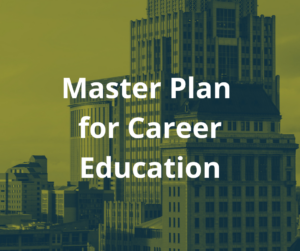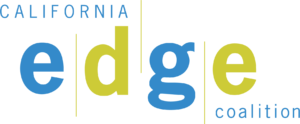 In August 2023, Governor Gavin Newsom initiated the creation of California’s Master Plan for Career Education. The goal of this initiative is to enhance equitable access to high-paying jobs by tackling structural barriers and improving education and training pathways. Public input, which highlighted key priorities, was submitted to inform the plan and a report was released July 2024 uplifting key themes and recommendations. Below are two upcoming opportunities to learn more about the development of the Master Plan for Career Education and also key highlights of the recent public input report.
In August 2023, Governor Gavin Newsom initiated the creation of California’s Master Plan for Career Education. The goal of this initiative is to enhance equitable access to high-paying jobs by tackling structural barriers and improving education and training pathways. Public input, which highlighted key priorities, was submitted to inform the plan and a report was released July 2024 uplifting key themes and recommendations. Below are two upcoming opportunities to learn more about the development of the Master Plan for Career Education and also key highlights of the recent public input report.
Upcoming Hearings and Webinars
- Select Committee on the Master Plan for Higher Education in California – Chair, Assemblymember Marc Berman will be holding an informational hearing on Tuesday, August 13th from 1:30 p.m. to 4:00 p.m. in Sacramento – State Capitol, Room 447. The subject of the hearing is Developing a New Master Plan for Career Education. The hearing will consist of panels including:
- Existing Challenges and Opportunities. This panel will include a student, practitioner, employer, labor, and disability representative.
- Update on the Development of the Master Plan for Career Education. This panel will include representatives from WestEd.
- There will be an opportunity for public comment. Agenda available here. View the live hearing here.
- Governor’s Office and West Ed are hosting a webinar to provide information about the Master Plan on Career Education’s recent convenings and preliminary solutions on Thursday, August 15th at 12pm. Sign up here: https://careereducation.gov.ca.gov/master-plan-engage/
The recently released community input report uplifts key topics that partners across the state provided during the regional convenings that took place during the Spring 2024. Here are some highlights that are uplifted in the report and aligned w/ EDGE’s recommendations:
- Must use a collaborative approach during the development of the master plan, like including youth in the decision-making process, leveraging existing structures, and take cultural sensitivity into account.
- Align data and systems to strengthen collaboration among employers (especially small and medium-sized businesses) and education, workforce, and social services sectors, including incentivizing workforce participation.
- Participants envisioned a future where adults and opportunity youth have access to information that clarifies career paths, helping them understand high-paying, in-demand job options, the necessary education and training, and available financial and public benefits to support their training.
- Workforce training is co-designed with employers and offered flexibly to help learners balance work and family. Programs are tailored to specific populations, combining language and technical skills or providing accessible work-based learning. Apprenticeships allow learners to earn while mastering skills. Employers prioritize certified skills and Career Passports over degrees in hiring.
- Invest in dual-enrollment initiatives to encourage high school students to take college courses early, like Oakland Unified program that pays students for dual enrollment. Regional Occupational Programs, dual enrollment, and project-based learning with employer involvement effectively bridge classroom learning and career readiness.
- Expand credit for work experience, prior learning (including foreign degrees), and alternative credentials like micro credentials, ensuring they are recognized by industry employers.
- Establish a regional standard for skills and competencies that’s validated by employers, unions, industry, community organizations so it’s not just based on academics.
- Provide comprehensive support services. Participants focused on basic needs, counseling, career services, and academic support at community colleges and training centers for apprenticeship sites.
- Utilize existing data structures, such as the Cradle-to-Career Data System, to guide decision-making. Leverage labor market data for regional planning and establish common measures to document outcomes, ensuring accountability and maintaining focus on student success.
- View the full report here.
As for next steps, between now and November 2024, relevant state agencies will discuss public engagement recommendations, with input from constituency groups and continued public meetings. Nominations for these groups are still being vetted. The finalized Master Plan for Career Education, due by the end of 2024, will recommend policy, practice, and resource changes to address structural barriers to prosperity. This plan will provide a framework for equitable career pathways and hands-on learning for all Californians, extending into the next decade
